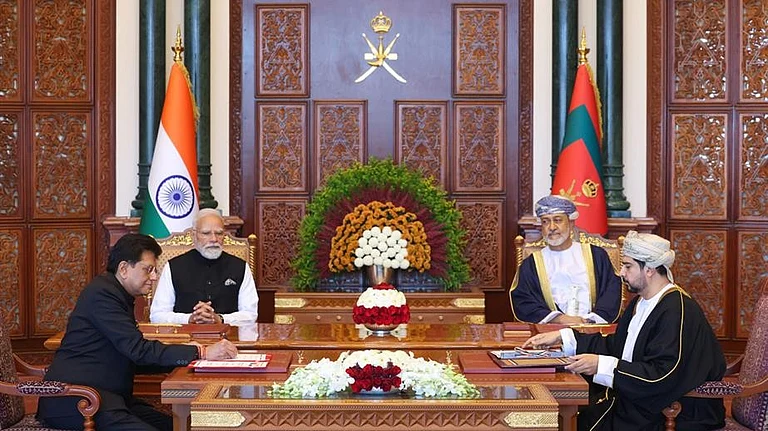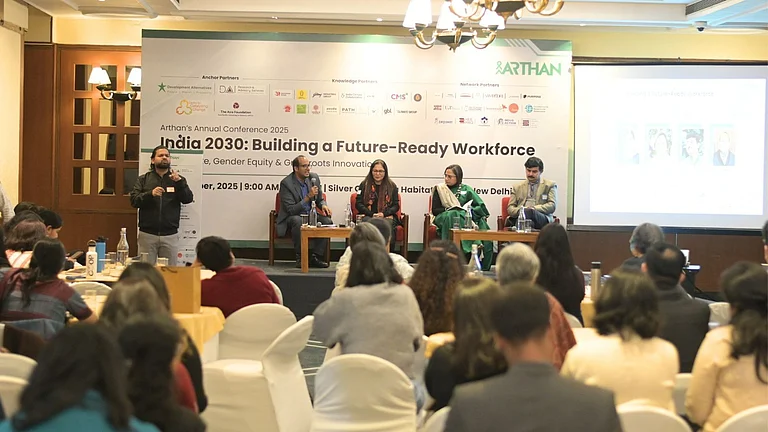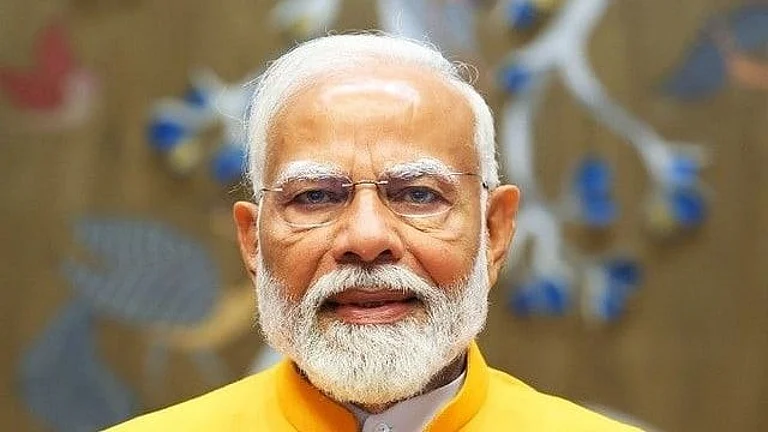At a time when the gaming ecosystem in India is facing a funding downturn due to doubts around taxation, global VC fund Bitkraft Ventures is doubling down. While the firm hasn’t formally set up an office in India, it has brought on board key partners on the ground to tap into high-growth regions like India, West Asia, and Southeast Asia.
In a candid interview with Outlook Business, Anuj Tandon, Partner for India and UAE at Bitkraft Ventures, shares his outlook on India’s gaming ecosystem, why investor confidence hasn’t dried up, and how Bitkraft’s operator-led approach offers more than just capital to founders.
What drove Bitkraft’s decision to increase focus on India at this moment?
We don't have an office in India. Bitkraft has hired me and one more person as partners looking at emerging markets. Our strategy is to focus on emerging markets including India, West Asia, and some parts of Southeast Asia as high-growth engines for gaming and interactive media companies.
Established markets like Europe, the US, and China have slowed down in growth over the past one or two years. In contrast, growth is happening in markets like India and West Asia. Hence, it’s natural for a global fund to have people on the ground in these regions who have specific experience in investing and operating here to keep a lookout for young startups, and also mature startups entering the growth stage. It’s a strategic decision because we see India as a market with great potential, one of the best, if not the best, emerging market. Turkey is a close second. That makes it imperative to have a presence in terms of people
Globally, between 2020 to 2022, because of COVID, people were just staying at home. Gaming got unnatural growth, which increased playtime and monetisation. This was a global phenomenon. In India, it actually changed habits, people started paying for content in games. Before COVID, India was probably among the lowest in terms of in-app purchases, but that changed. There are now green shoots.
Has the gaming sector integrated AI into operations? It seems that despite the cost benefits, there hasn’t been great investor confidence.
That’s not true at all. Any technological shift be it smartphones, VR/AR, whatever it’s the gaming industry that’s always been at the forefront. When smartphones came in, games were the number one consumer app. Same with VR and AR. AI is fundamentally impacting gaming. It’s changing how we interact with NPCs (non-playing characters). It’s also democratizing game development, especially in markets like India.
Earlier, developing game art might have taken three to four days. Now it takes one day. It’s speeding up game development for casual games. We're in the middle of a tech shift. It’ll take another two to three years before we enter a “post-normal” AI world. But gaming is already being impacted both in development and monetization
Are gaming startups today genuinely using AI in meaningful ways or is it still more of a buzzword in pitch decks?
That’s where you can separate the wheat from the chaff. That’s why you need sector-specific VCs who can identify what’s real and what’s just a buzzword.
Bitkraft is a global fund. We see deals from the US, Europe, India, West Asia, and Southeast Asia. Because of that, we can evaluate Indian startups much better. AI is fundamentally impacting both game development and consumer-facing apps in interactive media. We can easily identify which startups are actually leveraging it, most people can’t, because they don’t have that global context.
Before joining Bitkraft, you led gaming at JetSynthesys. How has that operator experience shaped your investment lens, especially in navigating Indian market dynamics?
I’ve been an operator for 12 out of my 15 years in this space. I built my own startup, Rolocule Games, which was acquired by Dream11 (Dream Game Studio). I was also CEO of a Chinese public-listed company in India. At Jet, I played a quasi-operator role.
I’ve also been an investor where I led Krafton’s corporate development division and most of the deals they did till 2023. In gaming and interactive media, having operator knowledge is very important. The field has a lot of depth in understanding metrics, game subgenres, content types. A generic VC usually won’t dive that deep. So when you focus on one sector, your operating knowledge becomes a lot more useful.
You were instrumental in building the game publishing business at Nazara. How do you see publishing models evolving in India, particularly for indie studios or IP-led content?
At Nazara, when I was head of game publishing, there were 50 to 70 gaming studios in India. Now there are 500 to 600. That’s a 10x growth. Most of them are independent SMEs.
We’ve seen some exits with Indian studios building games for global audiences. But in India, publishers still lack a moat. Why would a global developer let you publish their game unless you solve a problem? Either help them make more money or get more users.
That’s why small publishers in India have struggled. But in the post-IDFA, AI world, there’s space to build a game publisher in India, for the Indian market. India-to-world is a bigger opportunity right now, but India-to-India will become big in the next three to five years.
How has your investment thesis evolved amid broader shifts like AI integration, the Web3 cooldown, and renewed interest in spatial computing?
I can’t talk in detail about my exact investment thesis, but it’s very deep. We keep evolving it annually. We’re investing in studios making games for India and for the world. We’re bullish on interactive media, gamified apps, social, audio stories, short reels. These are making money in India and will continue to do so.
We’re bullish on publishing too. We’re just waiting for the GST issues in real-money gaming to play out before taking a view on early-stage investments in that space.
At the 2024 Bitkraft Summit, you spoke about India’s growing middle class and rising disposable income driving demand in gaming and interactive media. What signals today reinforce India’s global competitiveness in this space?
Every large-population economy has this opportunity. When the per capita GDP grows, the middle class has discretionary spending especially on entertainment.
Earlier, that spend went into movies, popcorn, etc. Post-COVID, people realised they can get more fun paying Rs 50 or 100 for a game item, short drama, or creator interaction on YouTube. It’s cheaper and more immersive than analog entertainment.
More discretionary spend means more opportunity. Even if 10% of India spends $1, that’s $140 million for one app. Population advantage plus rising spend makes India a very attractive market. And the flywheel of IPOs is also starting to add another layer of value creation.
With the resurgence of XR and devices like the Apple Vision Pro, how do you assess the commercial potential and timeline for immersive tech to go mainstream in India and globally?
We believe the future is “synthetic reality” , some form of digital entertainment that feels real.
Look at 12-18 year-olds today. Their hangout isn’t on Facebook, it's on Roblox or Minecraft. They’re not even playing, just socializing. That’s the shift.
Globally, we’re reaching 30-40 million XR devices sold. I think we’re three to five years away from full commercial potential. India will lag, because we resist hardware-heavy products. Console gaming, XR, AR they all lag in India. Mobile wins because it’s essential.
India won’t be the first mover, but when cheap XR devices hit the market, we’ll see adoption. Maybe we’re seven to eight years away from commercialization in India.
With India’s online gaming market projected to grow at 14.5% CAGR nearly double the global rate, what specific opportunities or structural challenges do you see for Bitkraft in this region?
Growth is coming from emerging markets like India, Turkey, West Asia, Southeast Asia, Vietnam. If you want mobile game growth, you have to think about India. Otherwise, you're not thinking about growth.
I don’t see any structural challenges. This is a great market to be investing in. The next three to four years are probably going to be the best time to invest in India’s gaming sector.
What makes a gaming or immersive tech startup stand out at the Seed or Series A stage?
In the Indian gaming landscape, startups typically fall into three broad categories: real-money gaming, free-to-play mobile gaming, and PC/console gaming. For real-money gaming, key evaluation metrics include user engagement, gross transaction values (GTVs), the strength and experience of the team, and how well the company is prepared to navigate regulatory challenges.
In the case of casual or mobile gaming, investors primarily look at retention metrics and ARPDAU (average revenue per daily active user) to gauge monetisation potential and stickiness. For PC and console gaming, what stands out is the quality of the team, their creative vision, how well they understand and address market risks, and their ability to distribute the game effectively. These are the broad factors we evaluate. Of course, there are many nuances, but these are key.
And how is investor confidence in this space?
India, for the next three to four years, is the best place to be investing in gaming and interactive media startups. By interactive media, I mean anything that uses gamification social, dating, audio, video. India’s gaming industry is barely 10 years old at scale. The real value creation happens between years 10 to 20.
China’s gaming industry started around 1999-2000. Public companies and big valuations happened between 2010-2020. India is entering that phase now. Anyone who sees that as Bitkraft does will double down. Anyone who doesn’t is missing out.
Beyond capital, what kind of support does Bitkraft provide to founders?
In emerging markets like India, capital alone doesn’t solve problems. I was a gaming entrepreneur in 2010, I lacked both capital and experience. But Bitkraft offers a peer network. We have over 140 portfolio companies. Founders can talk to them, learn from different markets like US, Europe, Africa, Southeast Asia, Japan, China.
We also host the Bitkraft Summit, where founders meet top Western industry executives. Our advisory and executive network in the US is unparalleled. Plus, many of our partners, like me, are operators. That’s a huge advantage over financial investors with no specialization. We work closely with founders and offer things no other fund in India can.































